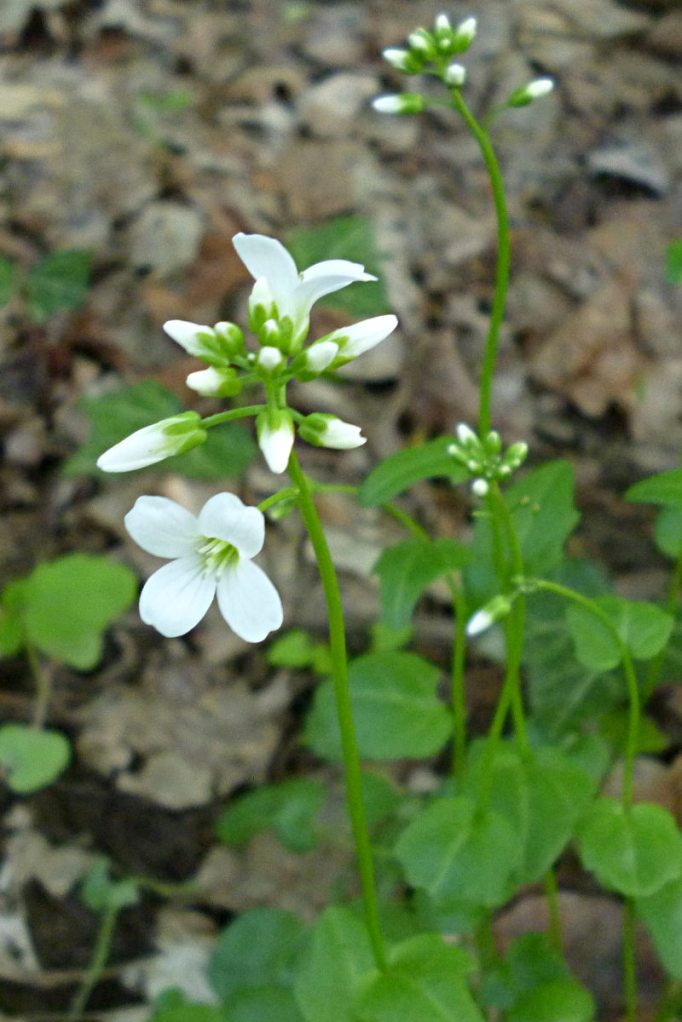 A relative of the Toothworts (which most botanists now also place in the genus Cardamine), this pretty little flower seems to like damp locations. This one was growing in a damp open woods in Bird Park in Mount Lebanon, where it was blooming in early May. The round leaves (changing to long and narrow as they go up the stem) distinguish this from other common species of Cardamine in our area.
A relative of the Toothworts (which most botanists now also place in the genus Cardamine), this pretty little flower seems to like damp locations. This one was growing in a damp open woods in Bird Park in Mount Lebanon, where it was blooming in early May. The round leaves (changing to long and narrow as they go up the stem) distinguish this from other common species of Cardamine in our area.
Gray describes the genus and the species:
CARDÂMINE [Tourn.] L. BITTER CRESS. Pod linear, flattened, usually opening elastically from the base; the valves nerveless and veinless, or nearly so; placentae and partition thick. Seeds in a single row in each cell, wingless; the funiculus slender. Cotyledons aecumbent, flattened, equal or nearly so, petiolate.— Mostly glabrous perennials, leafy-stemmed, growing along watercourses and in wet places. Flowers white or purple. (A Greek name, used by Dioscorides for some cress, from its cordial or cardiacal qualities.)
Simple-leaved perennials with tuberous base.
С. bulbosa (Srhreb.) BSP. (SPRING CRESS.) Stems upright from a tuberous base and slender rootstock bearing small tubers, simple, or rarely forking, glabrous, in anthesis 1-1.5 dm. high; root-leaves oblong to cordate-ovate, stem-leaves 5-8, scattered, the lower ovate or oblong and somewhat petioled, the upper sessile, almost lanceolate, all often toothed; sepals greenish, with white margin; petals white, 7-12 mm. long; pods linear-lanceolate, pointed with a slender style tipped by a conspicuous stigma; seeds oval. (C. rhomboidea DC.) — Wet meadows and springs, e. Mass. to Minn., and southw. May, .June.

One response to “Spring Cress (Cardamine bulbosa)”
[…] A plant whose whole life cycle, from bursting out of the ground through flowering and seeding and withering and back to dormancy, occupies about a month in the early spring. Toothworts are common in the woods around Pittsburgh, sometimes in great numbers. The deeply cut leaves are distinctive and easily set this plant apart from other members of the same group, such as the Broadleaf Toothwort and Spring Cress. […]